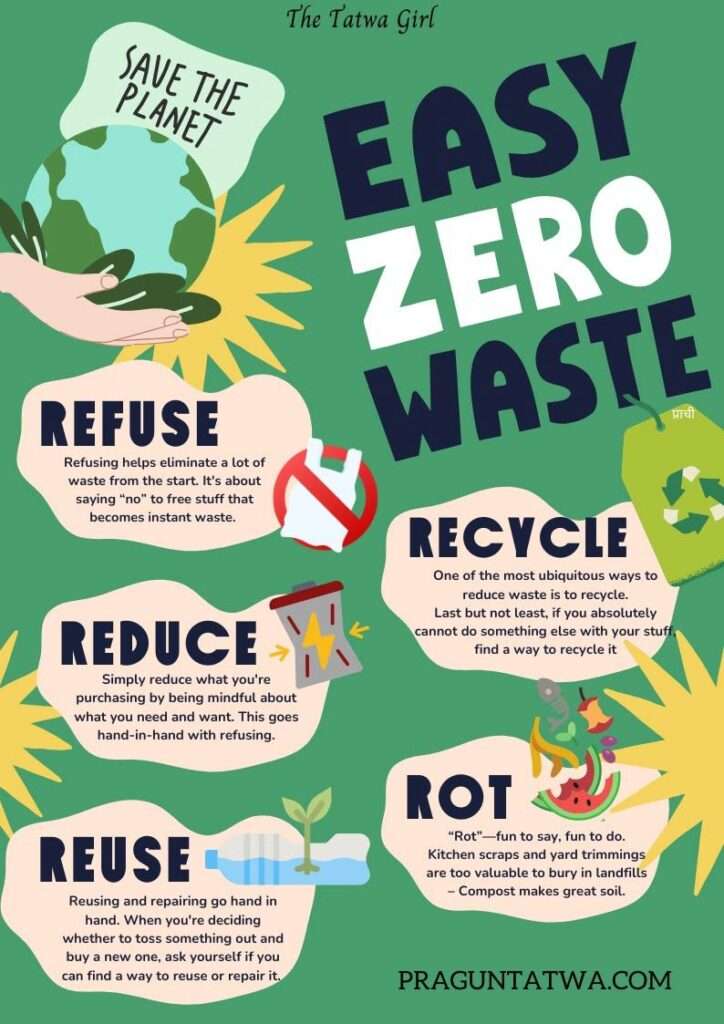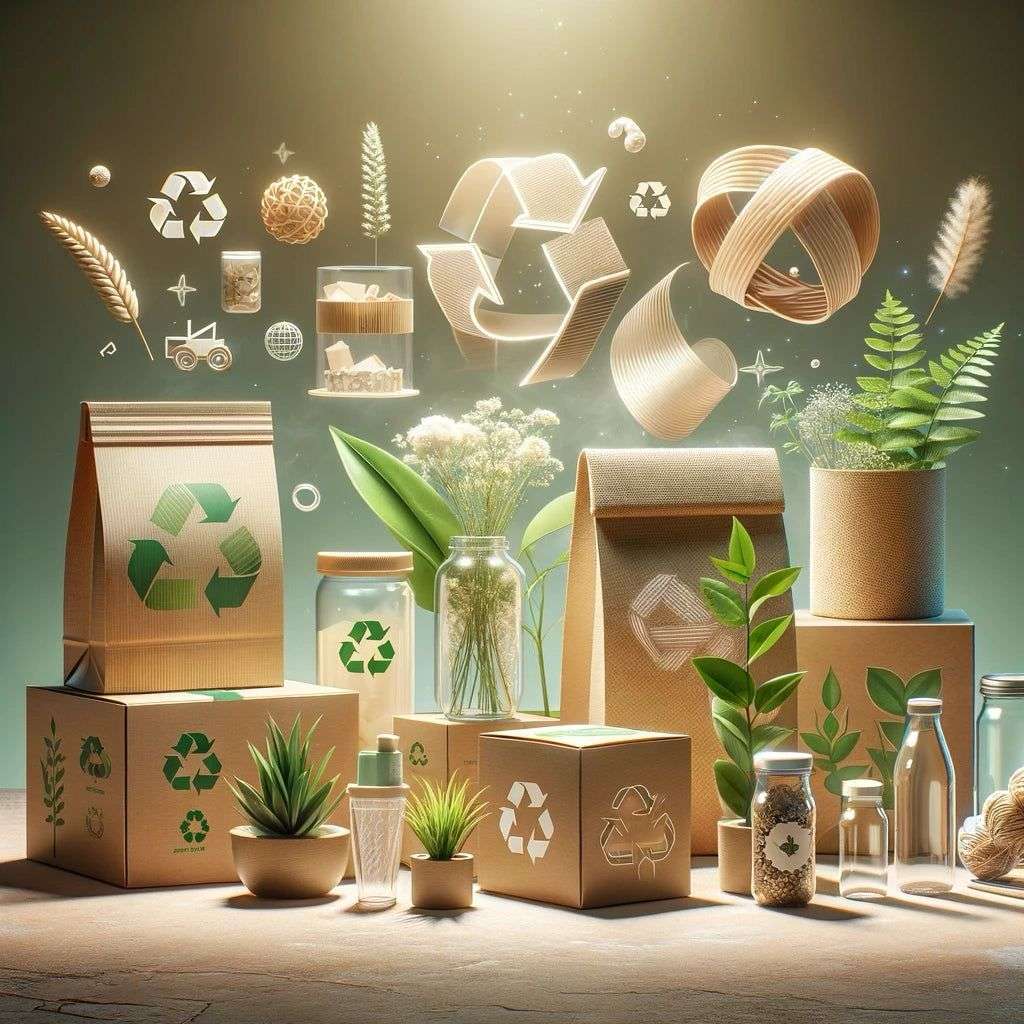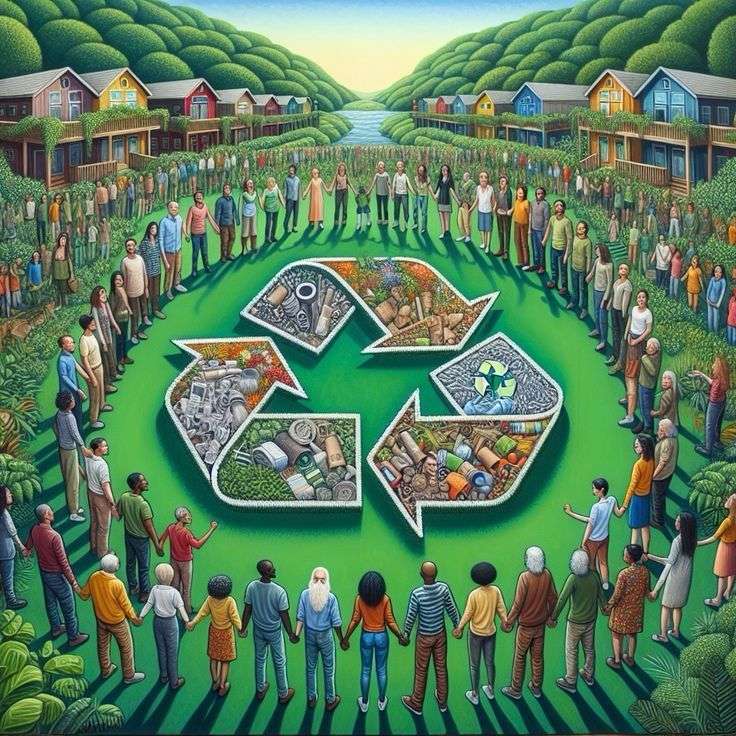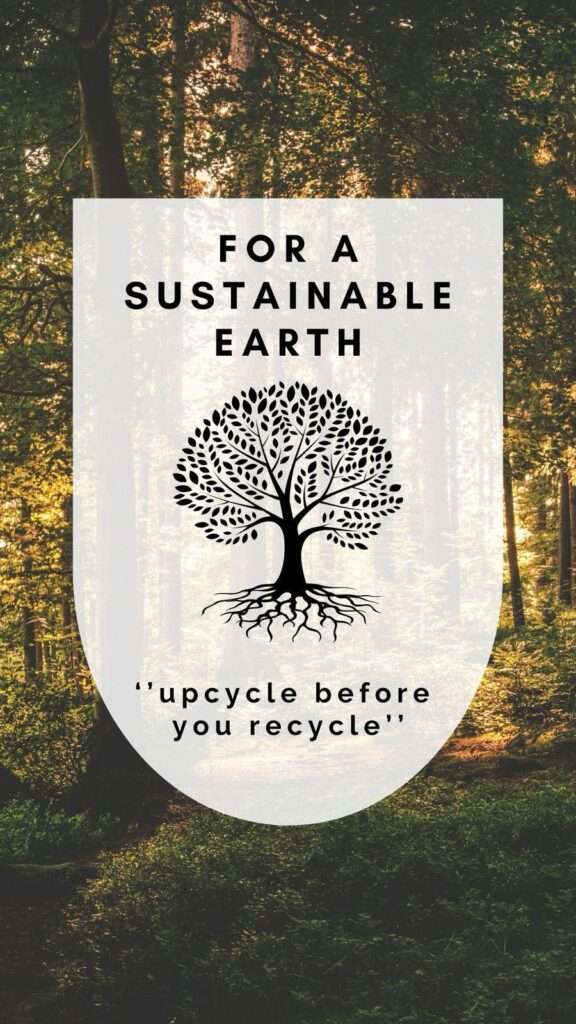The zero-waste lifestyle has gained immense popularity over the last few years, and 2025 is the perfect time to jump on board. With increasing awareness about environmental sustainability and the growing concern over waste management, making the switch to zero waste is more crucial than ever.
Not only will adopting this lifestyle reduce your environmental impact, but it will also promote mindful consumption, save money, and encourage healthier living.
If you’re wondering where to begin, this beginner’s guide will walk you through the essential steps to start living a zero-waste lifestyle in 2025!

1. Understand the Zero-Waste Philosophy
At its core, zero waste is about reducing waste to the absolute minimum by making mindful choices that help preserve the planet. The goal is to keep items out of the landfill by reducing, reusing, recycling, and composting.
In 2025, it’s important to be realistic about your waste, and aim for a lifestyle where you create the least amount of trash possible, without aiming for perfection.
2. Evaluate Your Current Consumption Habits
Before you start making changes, take a step back and evaluate your daily habits. Take note of areas where you’re producing the most waste, whether it’s single-use plastics, food packaging, or disposable items.
Understanding where your waste comes from is the first step to making conscious choices that will help reduce it. Track your waste for a week or month, and pinpoint high-waste activities.
3. Start with the 5 Rs of Zero Waste
In 2025, the 5 Rs framework provides a simple approach to living a zero-waste lifestyle:
- Refuse: Say no to things you don’t need, especially single-use plastics and unnecessary freebies (like plastic straws or promotional items).
- Reduce: Cut back on the items you buy, focusing on quality over quantity. Opt for things that will last longer and are versatile.
- Reuse: Invest in reusable products like water bottles, shopping bags, and food containers. Try to buy second hand where possible, or repurpose items you already own.
- Recycle: Make sure to recycle everything that can be processed correctly. In 2025, look for more sustainable recycling options in your community, and reducecontamination by knowing what can and cannot be recycled.
- Rot: Composting organic waste is essential for minimizing landfill contributions. Start a compost bin for food scraps and yard waste if you have the space.

4. Ditch Single-Use Plastics
Single-use plastics are among the top contributors to pollution. In 2025, most countries are tightening restrictions on plastic use, so it’s a great time to switch to eco-friendly alternatives. Here are a few easy swaps:
- Reusable Shopping Bags: Carry cloth bags to the grocery store instead of plastic ones.
- Reusable Bottles & Cups: Switch to glass or stainless steel water bottles and coffee cups.
- Beeswax Wraps: Replace plastic wrap with reusable beeswax wraps for food storage.
- Metal Straws: Say goodbye to plastic straws and use reusable metal, bamboo, or glass straws.
5. Invest in Zero-Waste Personal Care Products
The beauty industry is infamous for excessive packaging, but more sustainable alternatives are now available. Consider switching to products like:
- Shampoo Bars: Traditional shampoo bottles contribute a lot of waste. Try solid shampoo bars, which are plastic-free and long-lasting.
- Refillable Deodorant and Toothpaste: Opt for refillable deodorant sticks and toothpaste tablets in compostable packaging.
- Eco-friendly Toiletries: Switch to bamboo toothbrushes, reusable cotton rounds, and biodegradable toilet paper.
6. Choose Eco-Friendly Food Options
Food waste is another major issue in today’s society. To start minimizing your food waste in 2025, consider these steps:
- Shop in Bulk: Purchase dry goods like grains, beans, and nuts in bulk to avoid excessive packaging.
- Compost Your Food Scraps: Instead of throwing away food waste, start composting organic materials.
- Avoid Processed Foods: Packaged, processed foods contribute significantly to plastic waste. Choose fresh, local produce instead.
- Meal Planning and Leftovers: Minimize food waste by planning meals and repurposing leftovers.

7. Buy Secondhand and Sustainable Products
In 2025, it’s easier than ever to find sustainable alternatives to everyday items. However, buying second hand items should always be the first choice. Here’s how to embrace this:
- Second hand Clothing: Shopping at thrift stores or online resale platforms reduces textile waste and helps you avoid contributing to the fast fashion industry.
- Sustainable Home Goods: When you need new items for your home, look for eco-friendly alternatives or buy used furniture and appliances.
- Durable and Repairable Products: Invest in high-quality, long-lasting products instead of disposable or cheaply made ones. Look for items that are built to last and can be repaired.
8. Support Brands That Embrace Zero-Waste Practices
The companies you choose to support play a big role in your zero-waste journey. Look for brands that align with sustainability and have transparent practices.
In 2025, more brands are offering zero-waste products, so check for certifications like “B Corp,” “Fair Trade,” or “Plastic-Free.”

9. Set Realistic Expectations and Celebrate Progress
Transitioning to a zero-waste lifestyle is a journey, not a destination. Start with small, manageable changes and work towards reducing your waste over time.
It’s important to celebrate your progress and avoid the pressure of achieving perfection. Share your journey with others to inspire positive change!
10. Involve Your Community
In 2025, making a zero-waste lifestyle a community effort can have a much greater impact. Organize swap events, recycling drives, or sustainability workshops with your neighbors and friends. The more people involved, the bigger the collective impact!

Starting a zero-waste lifestyle in 2025 is easier than ever, thanks to a growing movement toward sustainability. By following these simple steps, refusing unnecessary items, reducing consumption, reusing materials, recycling, and composting, you can significantly minimize your environmental impact.
Remember, this isn’t about perfection; it’s about making mindful choices that align with your values. Start slow, stay committed, and celebrate your progress!
By incorporating these sustainable habits, you’ll be part of the solution in creating a cleaner, greener future. Happy zero-waste living!





